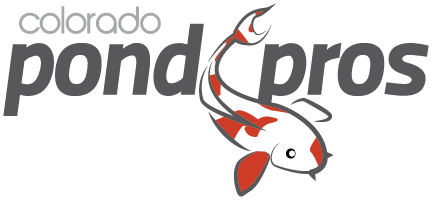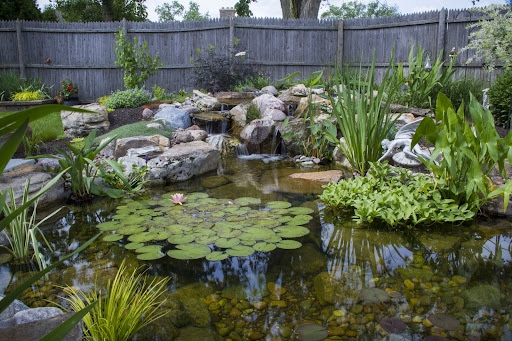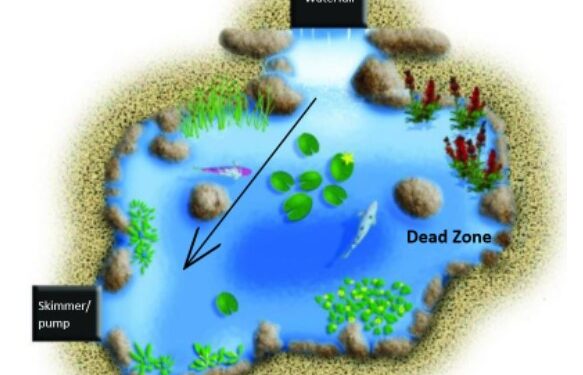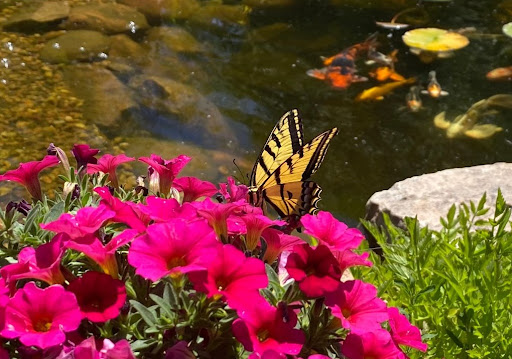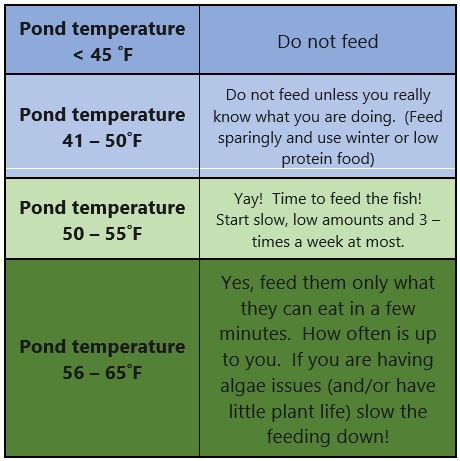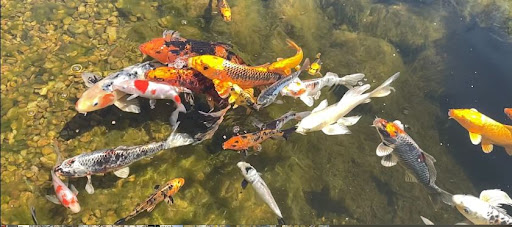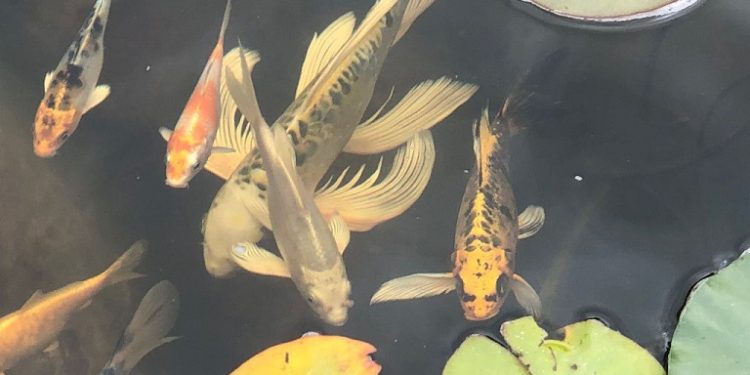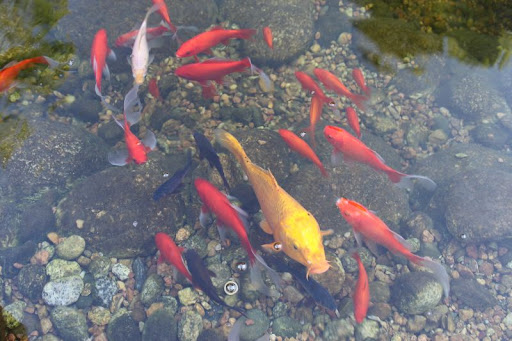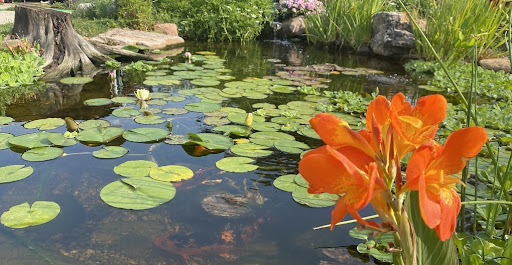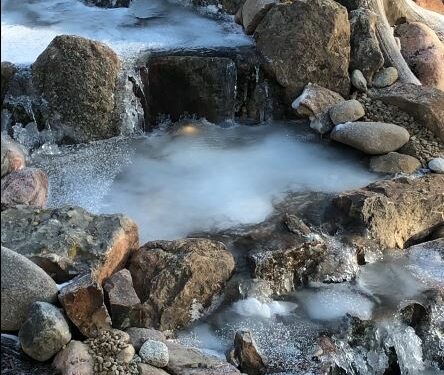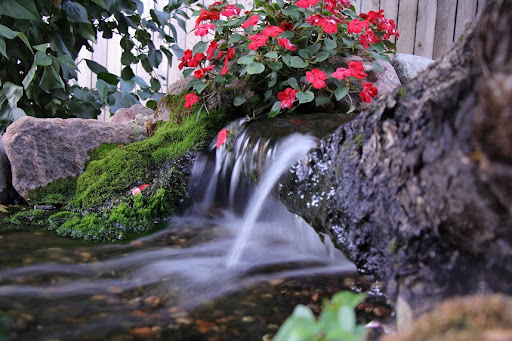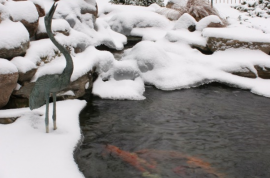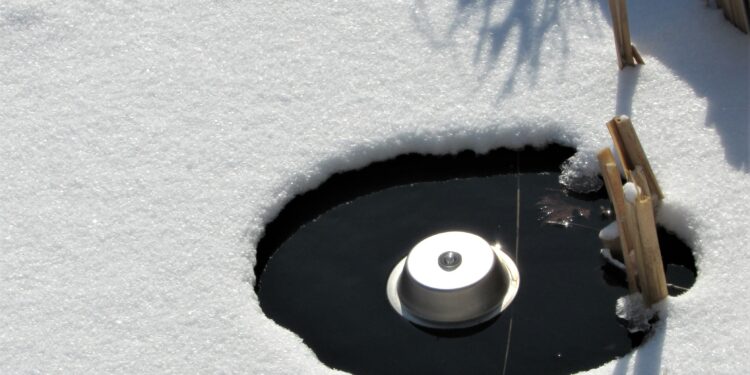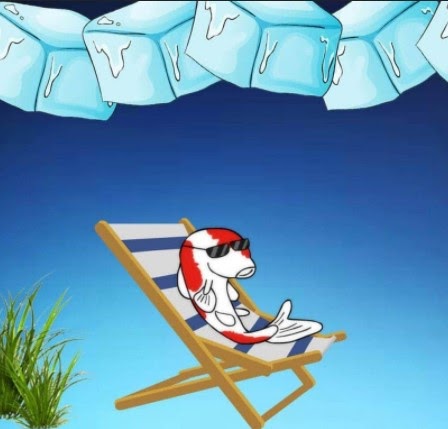Does a pond have to have plants? Of course not! If you prefer a very rocky backyard pond, with no lush, green beauty and dirty water, then the pond definitely does not need plants…Alright, no need to get snarky. But who doesn’t love plants??
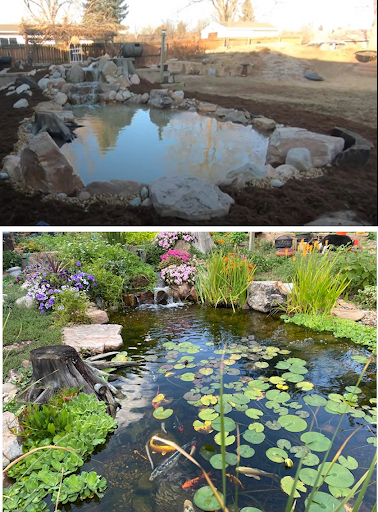
Do the two pictures above even look like the same pond? They are! This is Kristi’s pond before it had any plants and after they had grown in. Even without landscaping, it was a handsome pond; but plants don’t just provide beauty, they are an integral part of a healthy ecosystem. Plants are a workhorse essential for healthy water.
Why Plants?
Because they filter the nutrients out of the water that would otherwise feed algae!
It’s about more than just beauty
Aquatic pond plants bring a new level of beauty to any pond, but they are much more than just good looks. Plants are the natural workers of a pond ecosystem. They use the nutrients that the fish are adding to the water (think fish poop!) and become living filters. Even if the pond doesn’t have fish, there are other nutrients in the pond that, if left alone, algae will swoop in and use.
How many plants does a pond need?
40–60% of the pond’s surface area should have plants. Even when there are skimmers, Biofalls, and pressure filters, plants are still the best filtration for a pond.
What kind of plants do I need?
Having a variety of plants in your pond not only looks better but helps filter better as well. That means less maintenance! As each plant has different foliage, length roots, and flowers, they use different parts of the nutrients. And they are heavy feeders right before they bloom.
What about shade?
Sun and shade are very important for the pond and the fish. A very sunny pond without plants is highly likely to have a lot of algae. Plants provide shade which helps regulate the temperature swings in the pond. As it gets hot, the shade will keep that pond much cooler than it would be without the extra help. There are aquatic plants that love full sun, and there are those that prefer part sun or even shade.
Size matters!
When purchasing aquatic plants, remember to read the label carefully and look for the size it will be as a mature plant. If your pond is 4 feet by 5 feet, a plant installed in the very front of the feature that grows into a 3-foot tall bush will block your view of the pond. Conversely, if the pond is not near your sitting area, small plants may not be big enough to be enjoyed from the deck.
Pond Plants Are Not Difficult To Care For
- You don’t have to water pond plants!
- Lilies may need fertilizing, but the other plants don’t. Nutrients in the pond fertilize the plants, especially if there are fish.
Pro Tips:
When you purchase plants make sure you look at the Zone on the card to know if theses plants will return the next spring or not. Most areas in Colorado ,on the Front Range are in Zone 5.
We LOVE water lilies, but water lilies alone are not enough for good filtration.
How can Colorado Pond Pros help?
If we’ve nudged you to start planting, then Let’s Talk Aquatic Plants! This blog will list our favorites and how to plant them.
For any other questions about backyard pond installation and landscaping, please contact us at Colorado Pond Pros! We building, rebuilding, and servicing ponds since 2001, and we pride ourselves building works of art with great customer service along the way!
For more about ponds, read our pond blog!
